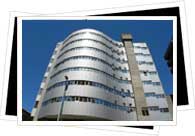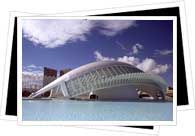Moderniste Architecture in Valencia, Spain
 Moderniste Architecture in Spain
Moderniste Architecture in Spain
Unlike the majority of Europe's major artistic trends, Spain holds the title as the founder of Modernisme, a cultural movement of the late 19th and early 20th centuries based in Cataluña. Individualistic and anti-traditionalist Catalán intellectuals, writers and artists who felt that Cataluña was lagging behind other European cultures aimed to revamp Catalán ideas and culture to get the society on par with its neighbors.
Cataluña's creative genius, Antoni Gaudí, headed up the architectural branch of Modernisme, providing Cataluña- especially Barcelona- with a brand new, extremely aesthetic look. While it was centered in Cataluña, Modernisme did leak out to neighboring communities; for this very reason, we are lucky enough to be able to check it out in Valencia!
Moderniste Architecture Characteristics
Moderniste architects draws from a variety of sources as its creators picked and chose details to include, resulting in the formation of this extremely aesthetic style. Inspired heavily by Gothic and Moorish architecture, considered to be Spain's two most oustanding architectural styles, you will often find things like spires, repeated patterns, ceramics and towers in Moderniste structures. Architects also drew from the natural world, incorporating organic forms, animals, trees, leaves, etc.You will find all of these details employed in a characterically free, creative manner and accompanied by curves, colors, sculptural expression and bold structural arrangements.
 Moderniste Architecture in Valencia
Moderniste Architecture in Valencia
Valencia has seen its share of Moderniste architecture within its city limits. Ambling throughout the city streets, you're likely to come across all sorts of constructions, however Valencia does have three stand-outs of Moderniste architecture. The first is the Mercado de Colón (Market of Colón), a former marketplace now filled with boutiques, cafés, and flower shops. Visually stunning, you can't help but revel in the ceramic work and glass mosaics beaming with color.
A second market, the Mercado Central, is one of the largest markets of its kind in Europe and a prime example of Moderniste architecture. Finally, the Estación del Norte, Valencia's train station. Look for the colorful glass and ceramic mosaics, in which oranges, roses, orange blossoms and a wide range of other natural images are depicted.
